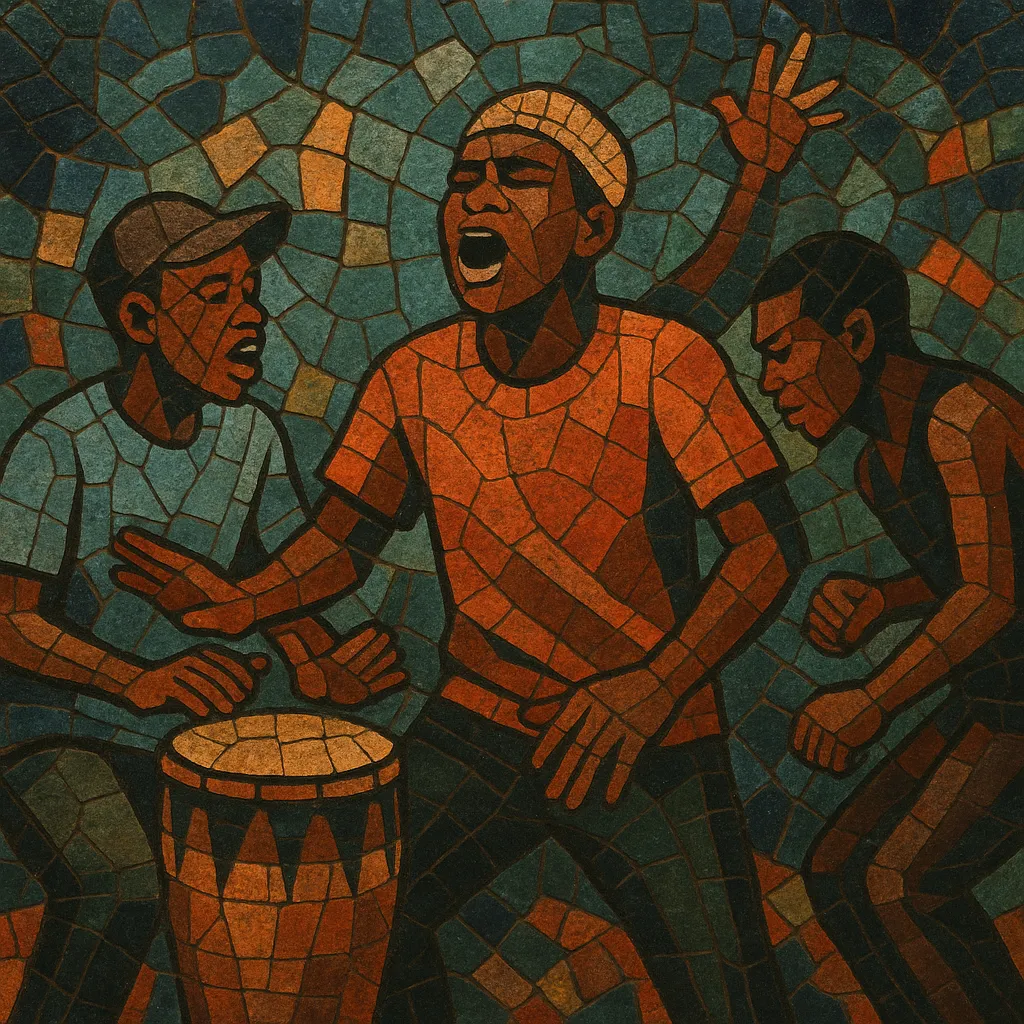Mbolé is a contemporary urban dance-music style from Cameroon that blends the raw, percussive drive of local street-party traditions with the chant-like immediacy of call-and-response vocals.
Characteristic features include handclap-heavy grooves, minimal yet propulsive drum programming, deep sub-bass, and short, catchy vocal refrains delivered in Camfranglais (a mix of French, English, and local languages) as well as in indigenous tongues. The feel is communal and participatory, designed for circles of dancers and crowd chants rather than for slick, harmony-heavy pop.
While rooted in Cameroonian idioms, mbolé borrows from regional urban styles and global hip hop production aesthetics, resulting in a punchy, loop-driven sound optimized for street performances, clubs, and viral dance trends.
Mbolé emerged in the 2010s in working-class neighborhoods of Yaoundé, Cameroon, where informal street parties and youth crews developed a distinctive call-and-response chant style over handclaps and makeshift percussion. The name became associated with a community-centered way of making music: forming a circle, trading refrains, and prioritizing energy and participation over elaborate arrangements.
As producers began to translate the street feel into recorded tracks, they retained the core building blocks—dry claps, shakers, woodblocks, and a tight kick—then added sub-bass and sparse synth stabs. The aesthetic stayed deliberately minimal, foregrounding rhythmic feel and chant hooks. Lyrics often reflect daily life, humor, social commentary, and neighborhood pride, commonly delivered in Camfranglais to reach a wide urban audience.
Late-2010s and early-2020s social platforms (WhatsApp, Facebook, TikTok) propelled mbolé dance challenges and hooks beyond neighborhood parties, bringing the style into clubs and radio rotations nationwide. Producers and vocalists exchanged ideas with adjacent Central and West African scenes, absorbing elements from coupé-décalé, ndombolo, and afrobeats while retaining a distinctly Cameroonian pulse connected to bikutsi and bendskin.
With growing visibility, crews and solo acts refined sub-variants—some rougher and percussive for dance circles, others slightly more polished for mainstream playlists—yet the core identity remains: crowd-led refrains, kinetic claps, and streetwise storytelling.


